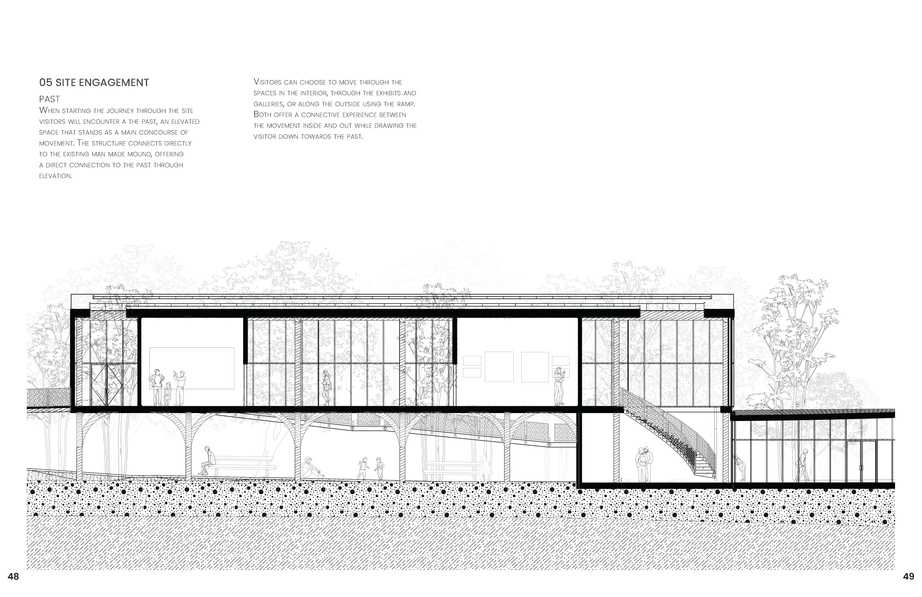Panorama:
A Living Learning Laboratory
This project presented a vast site to build on, one that was dipped in local history while seeing active engagement even though it was missing a formalized program. The challenge became how to best utilize the site in a way that pays homage to its roots without disturbing the current usage. It’s from this that project became about emphasizing the natural landscape through the built environment, highlighting the changes to the site over time. The assignment was made over a twenty week period using Revit, Rhino, Twinmotion, Photoshop, Illustrator, and Procreate. The final product received an honorable mention in the IDA awards 2024 for "Architecture Project Development/Mixed Use."

Statement of Intent

Panorama: A Living Learning Laboratory envisions architecture as an active participant in the restoration, education, and regeneration of its environment. Situated on a former sand quarry along the Chattahoochee River, the project transforms a once-degraded industrial landscape into a living system that celebrates ecological processes and human curiosity. The design responds to the site’s history of extraction and alteration by creating a series of interconnected spaces where natural cycles and human learning occur side by side. Through the integration of adaptive systems, productive landscapes, and immersive experiences, the project positions itself as both a research center and a public forum—one that bridges science, design, and community engagement. The architecture expresses the dynamic transitions of the site—its past as an exploited terrain, its present as a restored ecosystem, and its future as a testing ground for sustainable innovation.
The building’s form and material systems emerge from the logic of the landscape: elevated volumes protect sensitive wetlands, porous facades filter light and air, and bio-integrated panels cultivate algae for research and carbon sequestration. Each element operates as a teaching tool, revealing the symbiotic relationship between human action and ecological resilience. Ultimately, Panorama proposes a new model for environmental stewardship—one that transforms observation into participation, infrastructure into habitat, and architecture into a living organism that learns, adapts, and gives back to the place it inhabits.





















